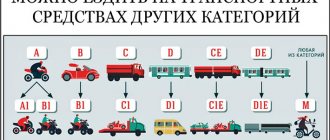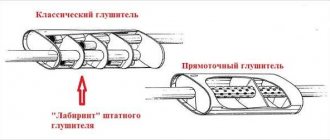Every motorcyclist sooner or later has the need to transport a two-wheeled vehicle without their own power. And to solve this problem, there is probably no more economical and convenient way to transport a motorcycle in a car trailer. You just need to organize everything correctly.
For a successful trip, the most important thing is to take care of its safety. First of all, you should familiarize yourself with the legal side of the matter. Different countries have their own nuances in the content of laws. Therefore, be sure to check all the details on how to transport a motorcycle in a trailer and not be fined by the traffic police.
The same rules apply to the transportation of motorcycles on Russian roads as to the transportation of goods in general.
How can you transport a motorcycle?
If you need to take a moped or motorcycle to some place and it is impossible to ride it, you can use different delivery options:
- use the services of a transport company;
- install an additional platform or trailer to your vehicle and transport it;
- place the load in the cab or back of a truck, pickup truck or minibus, securing it with cables.
According to traffic regulations, it is allowed to install additional platforms on your car; the main thing is to mark the oversized cargo and secure it securely, ensuring traffic safety.
When using a trailer, register it in the traffic police system, receiving documents and a license plate. No special rights are required for this. For beginners, it is better to order delivery from a specialized company.
Transportation of ATVs
The trailer for transporting an ATV can be with or without brakes, with a wheel diameter of either 13 or 16 inches. Such trailers are called universal because they can transport both equipment and any cargo. To transport equipment, an additional device is used to properly secure it for greater reliability.
Not all roads allow ATVs. And if you decide to take a walk through impassable expanses, you still need to take the ATVs to those expanses. The best and most convenient solution is to use a light trailer.
ATV trailer
Our domestic manufacturers offer good trailer options. But if this is your first time, you need to know more than just how to transport your equipment to its destination. You also need to be able to properly load vehicles onto a trailer and unload them correctly.
Additional equipment for a universal wide trailer must be required, since without it it will not be possible to securely and stably secure the ATV. A winch and an automatic sliding wheel are required. You also need to install rails on the sides of the trailer to tie the halyard.
The station wagon trailer has a spring type of suspension. And therefore, regardless of the weight of the equipment, the trailer can drive smoothly and stably. The awning is equipped with a side door. Therefore, the equipment can be refueled directly in the trailer.
What steps need to be taken to properly load the ATV:
- The awning is rolled up and secured at the top with a special cord. The side of the trailer opens.
- For greater stability, the Station Wagon trailer has dump brackets. They need to be removed in order for the tailgate to lower.
- The winch halyard is secured to the bumper of the transported equipment.
- Roll the ATV into the trailer under your own power.
- The ATV is secured with a halyard. It is tied to the rails that are installed on the sides.
- The winch disengages. And the awning closes.
- Tipper shackles will help prevent your trailer from accidentally tipping over on the road.
With skillful actions, the entire loading procedure will take no more than five minutes. When the ATV has reached its destination, unloading it is done in the same way as loading it, only in reverse order.
Transportation methods
There are several options for transporting a motorcycle using other equipment:
- Inside a motorcycle tow truck/tow truck.
Hire special transport, which has all the fasteners and the necessary accommodation space. The courier is responsible for the procedure and works for a certain amount. A simple tow truck will do, the main thing is to warn in advance what type of transport you need to transport.
Transportation in a specialized vehicle
- In a pickup truck or truck bed.
The main thing is to secure the moped using recesses in the interior or on the body so that when moving the load remains motionless and does not interfere with the driver.
Move option
- Outside on the platform.
It can also accommodate two motorcycles placed side by side. Such platforms are also called forklift racks.
First, a heavy model is attached, then a lighter one, using straps and hooks.
Device for transporting motorcycles
- On the platform in front.
It is not necessary to mount it at the rear if there is enough space in the front and the car allows it. The main thing is to leave the license plate and headlights visible.
This is how they transport motorcycles too.
- Partial loading method.
When only part of the motorcycle is attached to the stand, usually the front wheel. This reduces the load on the tractor axle.
Partial loading method
- In a trailer.
Moreover, the cart is attached to another motorcycle, car or truck.
Sometimes they even transport it like this
It is important to remember safety and traffic rules so that the resourceful driver does not get fined during the delivery process.
Inside vehicles
This is where the scope for imagination lies! They carry motorcycles on everything. It's easy to talk about transportation when you have a pickup truck or a gazelle, from which you throw out the seats for a motorcycle. But we must admit, not every motorcycle fits in a pickup truck. There is one subtlety here: the ratio of the dimensions of the car’s cabin to the dimensions of the body. A pickup truck is not always as roomy as a wardrobe from Narnia. But drivers fell in love with minibuses and vans. The motorcycle is safe, it won’t go further than the van and you don’t have to worry about it falling out or getting lost along the way. In addition, the motorcycle is not affected by weather conditions inside the van.
When transporting motorcycles inside a vehicle, it would be good to have a wheel mount (trap); they are mounted to the floor and prevent the front wheel from dangling. Additional fixation with straps is also necessary. But we’ll talk about belts and traps a little later, since the issue is relevant for all types of transportation.
Transportation of motorcycles is available even if you have a passenger car, unless you are trying to pack a Honda GL1800 into a Kia Picanto, of course. It is possible to fit a modest motorcycle in reasonable proportions if you prepare the car and remove all unnecessary things and remove the seat. Sometimes it is necessary to partially disassemble a motorcycle if transportation inside a passenger car is limited by the working space. But all these are special cases and are considered separately.
Types of devices for transporting a motorcycle by car
You can transport a motorcycle in your car using additional devices.
1. Standard trailer - buy a cart or make it yourself. Attached at the back, a metal ring fits onto the hook. The design allows you to place 3 scooters side by side, depending on their size.
Can also be transported in a regular trailer
2. Transportation platforms - available in different configurations. Special stands are installed in front or behind the car and have the following characteristics:
- load capacity - 130 kg;
- equipped with a brake light, direction indicators and side lights;
- weight - 20 kg;
- width - 185 cm, length -80 cm, height - 15 cm;
- license plate frame.
It is important to secure them correctly using separate locations on the machine frame.
3. Fastenings to the tow bar for full or partial loading. A platform is installed on the bumper of the car, allowing it to partially/fully carry the load.
With a wheel on a towbar
Despite the simplicity of most designs, it is better to entrust their installation to professionals.
Other options for transporting motorcycles
If it is necessary to transport a two-wheeled vehicle, use:
- motorcycle tow trucks. For light modifications, minibuses with a ramp and fastening belts are suitable;
- motor locomotives with tail lifts. Suitable for heavy modifications. This technique consists of minibuses that have a ramp and a winch, which will be used to lift;
- all-metal vans. When transporting with their help, the owner of a motorcycle can be fully confident that his vehicle will be protected from a number of negative factors, including stones and foreign objects flying off during the trip;
- car transporters. The best option is covered car transporters-tow trucks. Thanks to the broken platform, you won’t need outside help to enter;
- own passenger car, provided that the interior meets the dimensions. To free up space, I lower the steering wheel, remove the windows, and remove the seats in the back. After this, the clamps are installed, through which the wheels will be clamped. You can also partially disassemble the motorcycle.
A separate method of moving motorcycles is towing. It is worth emphasizing that the motor vehicle must be securely fixed, and the tow bar must be suitable for transporting vehicles with a suspended front wheel.
Motorcycles should not be transported on their sides. In this case, damage to the plastic and motor elements is possible. Moreover, when moving in a lying position and secured with special fastening belts, fuel and oil leakage often occurs. Based on this, we can conclude that the safest and most convenient way is to transport the motorcycle vertically.
To avoid problems when transporting motorcycles, persons planning to transport them should familiarize themselves with the laws. They vary depending on the country!
If independent transportation is not possible, then the only right decision will be to turn to professionals who are well acquainted with the rules and features of moving motorcycles. Employees of transport and forwarding companies will develop optimal routes and select appropriate methods and transport, which guarantees the integrity and safety of the two-wheeled vehicle.
Thule Brink towbar: design description, official website, customer reviews
When transporting a motorcycle in a trailer, different types of mounting are used: brackets with holders are often made independently from strong materials. Brackets secure the wheels, parts are mounted depending on the dimensions of the motorcycle. Instead of an iron profile, it is allowed to take wooden beams.
Lodgment - in a special trailer it is already inside. If not, it's easy to install it yourself. Take the perforated profile and attach it to the base of the trailer.
It is advisable to use special devices for transportation
Other devices:
- gutter - stand, located on the bottom;
- gutter - gangway - it is convenient to roll equipment onto a trailer;
- support posts;
- belts - ties.
Most mechanisms are easy to make with your own hands from scrap materials, without drawings or diagrams.
Motorcycle tow truck/tow truck
In our world, almost all problems can be solved with money. If you get stuck along the way due to a breakdown or need to transport a bike but don’t have a workhorse, a motorcycle tow truck is always happy to see you. They can have any kind of transport, from a regular tow truck to an adapted van.
There’s nothing stopping you from calling even a regular tow truck. Not in every area you can find a free motorcycle tow truck, then why not turn to a simple one, the main thing is to warn that you want to transport a motorcycle. It will occupy a modest place on the tow truck and will need to be securely secured in a special way so that it does not tip over. In exceptional cases, it is possible to place the bike immediately behind the driver’s cabin and attach it in the wind.
Subtleties of securing a motorcycle in a trailer
Having prepared the necessary tools, how to secure a motorcycle in a trailer:
- Having opened the tailgate, install the board (can be made of wood) securely so that it does not come off during loading. Secure with wire or ties for security.
- Push the motorcycle into 1st gear, otherwise the front wheel will start to slide. Squeeze the clutch with your left hand and hold the brake lever with your right. If mirrors are in the way, remove them completely/lower them down.
- Installation inside - place the moped on the supports - gutters, turn the handlebars to one side and rest them against the wall in front. Block the rear wheel with zip ties and tighten the brake lever with a clamp.
- Lay a tie through the steering column to the frame, fold the suspension and thus prevent swaying on the road. The rear wheel is also secured through the frame with tie-down hooks to the loops prepared in advance on the trailer.
- Load the loading board/chute - gangway and other equipment.
It remains to check the reliability of the fastenings, whether the motorcycle will move while driving. Jump in a trailer, simulating driving and observing the behavior of the equipment. Tighten belts in insecure places. Check the availability of documents: for a motorcycle, for a car and for a trailer.
If the road ahead is long, and there is little confidence in the created structure, it is worth driving first near the house, on a flat surface. Have a second person watch the trailer from the side. Already during the trip, periodically stop for inspection.
Partial loading method
The name speaks for itself. You attach the front wheel, securely fixing it, you can even remove the wheel itself, or even disassemble the fork. The motorcycle follows the car, leaning on its rear wheel. There are ways to attach it to the rear wheel. Then it is necessary to additionally fix the steering, but this method is rather strange. You shouldn't do that.
During partial loading, the motorcycle is tilted (which makes it difficult to transport long wheelbase motorcycles, as well as other types of heavy motorcycles). All technical fluids flow accordingly and the motorcycle is not always happy about this at the end of the journey.
An additional disadvantage is the danger of such transportation, because if road unevenness is passed between the wheels of a car, then the probability of a motorcycle wheel landing in a hole is 50/50. So-so jackpot.
How to make a mount for transporting a motorcycle yourself
To properly and safely transport motorcycles on a trailer, you will need several things that are easy to do.
Tightening belts - it’s easier to buy, focusing on the weight of the motorcycle, divide it in two so that each belt can support half the weight. Nylon ones are better.
Stop - helps to drive and secure the motorcycle in place. The stable stop is made of plastic or metal and is installed under the front wheel.
Tarpaulin will protect expensive equipment from rain, snow and road dirt.
The gutter-stand and gutter-gangway are easily mounted from steel sheets; you need to look at the size of the wheels of the motorcycle so that they fit inside the gutters.
What equipment will definitely come in handy?
Much depends on the dimensions of the scooter. Small models are easier to secure with straps and use only stops. Large ones require special staples.
These brackets will help you transport your motorcycle.
Types of trailers
Transportation devices differ in external and design characteristics. Types of trailers today are represented by the following prototypes:
- The carriage is open. Used for transporting different models of motorcycles. It does not have sides, so it requires the use of special fastenings and rigging belts.
Carriage trailer for transporting a motorcycle
- The trailer is homemade. Assembled from scratch. Sometimes a flatbed trailer is used for assembly by installing a stand under the motorcycle, as well as a mounting device, a ramp for entry, and a winch (in some cases).
Homemade trailer for transporting motorcycles
- Hinged trunk. The device, based on the principle of a bicycle rack, is installed on a towbar or roof.
Motorcycle rack on a car towbar
- Specialized trailers. They can be open or equipped with an awning for one, two or several vehicles. Involves factory installation of fasteners, gutters, stops, and stands.
Trailer for transporting motor vehicles
Sometimes motor vehicles are transported in the cabin, trunk of a car, or by towing. The first two options are suitable only for owners of large cars. The third has no legal basis and clauses in traffic regulations, and is therefore prohibited.
Towing a motorcycle
Safety when transporting a motorcycle
Having decided to make do on his own, the driver must know the requirements for transporting motorcycles:
- Have rights and a power of attorney (if the scooter is someone else’s), as well as the entire package of documents for your own transport, including an insurance policy.
- Adhere to the speed limit when driving with a trailer and remember the laws of physics (the cart can wobble when turning), as well as the fact that the dimensions of the vehicle are increased. On highways 90 km/h, ordinary roads - 70 km/h, on city roads - 60 km/h, near houses and in residential areas 20 km/h.
- The weight of the motorcycle must remain within the limits specified in the trailer documents.
- Make sure that the pit bike is secured securely in the trailer to ensure the safety of other road users.
Traffic police officers can stop the driver and check the documents, as well as the degree of reliability of the fastenings.
Transporting a motorcycle on a trailer requires care and a thorough approach. In order not to damage the equipment itself on the road, you should also think about the safety of other drivers. Much depends on the power and size of the tractor. Installing a platform on it or taking a trailer is not so difficult.
Check how the road train behaves during maneuvers
- Take a ride around the yard during a quiet time.
- Try to turn around on a narrow road.
- Test your skills when driving in reverse.
- Take a trip with different speed modes.
After such training, you will understand how to adjust your driving style to make the trip as safe and comfortable as possible. Both during training raids and on subsequent trips, make stops to check the tension of the belts and check that your cargo is secure.
And finally, if you have any questions about how to transport a motorcycle in a passenger trailer, you can always call us!
The following trailer models are ideal for transporting motorcycles:
| Photo | Model | dimensions | Purpose | Load capacity | Price |
| MZSA 817702.012 | 3780×1992×848 mm | Transportation of motorcycles | 525 kg | RUB 49,420 | |
| MZSA 817717.012 | 4794×1992×848 mm | Transportation of motorcycles | 554 kg | RUR 57,360 | |
| MZSA 831132.111 | 4850×2060×913 mm | Transportation of motorcycles | 905 kg | 120,000 rub. |
Criterias of choice
The range of motorcycles on the market is huge. It could be an old grandfather’s motorcycle with a sidecar, some kind of cross-country professional motorcycle, sports versions, mopeds, etc.
Personally, I can easily remember the following options:
- Ural;
- Dnieper;
- Minsk;
- Honda;
- Kawasaki;
- Suzuki;
- Yamaha;
- Ducati etc.
If you have a motorcycle, be sure to write in the comments which one and how you solve the problem of transporting it if it is impossible to transport it under your own power. In the meantime, look at the photos of beautiful bikes.
If you have 1-3 motorcycles or an old motorcycle that still has a side single-wheel cradle trailer, you will need appropriate trailers to transport them.
There are several criteria that you should pay attention to when choosing. This affects how to transport equipment and how convenient and safe you can transport motorcycles:
Transportation of ATVs
The trailer for transporting an ATV can be with or without brakes, with a wheel diameter of either 13 or 16 inches. Such trailers are called universal because they can transport both equipment and any cargo. To transport equipment, an additional device is used to properly secure it for greater reliability.
Not all roads allow ATVs. And if you decide to take a walk through impassable expanses, you still need to take the ATVs to those expanses. The best and most convenient solution is to use a light trailer.
ATV trailer
Our domestic manufacturers offer good trailer options. But if this is your first time, you need to know more than just how to transport your equipment to its destination. You also need to be able to properly load vehicles onto a trailer and unload them correctly.
Additional equipment for a universal wide trailer must be required, since without it it will not be possible to securely and stably secure the ATV. A winch and an automatic sliding wheel are required. You also need to install rails on the sides of the trailer to tie the halyard.
The station wagon trailer has a spring type of suspension. And therefore, regardless of the weight of the equipment, the trailer can drive smoothly and stably. The awning is equipped with a side door. Therefore, the equipment can be refueled directly in the trailer.
What steps need to be taken to properly load the ATV:
- The awning is rolled up and secured at the top with a special cord. The side of the trailer opens.
- For greater stability, the Station Wagon trailer has dump brackets. They need to be removed in order for the tailgate to lower.
- The winch halyard is secured to the bumper of the transported equipment.
- Roll the ATV into the trailer under your own power.
- The ATV is secured with a halyard. It is tied to the rails that are installed on the sides.
- The winch disengages. And the awning closes.
- Tipper shackles will help prevent your trailer from accidentally tipping over on the road.
With skillful actions, the entire loading procedure will take no more than five minutes. When the ATV has reached its destination, unloading it is done in the same way as loading it, only in reverse order.











